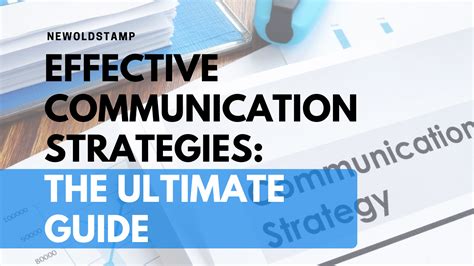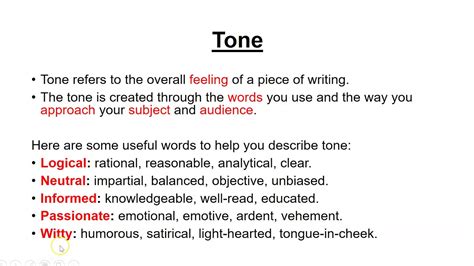The Art of Communicating Effectively: Why Tone Matters
In the vast landscape of communication, your words are only half the story. The other, equally vital half, is how those words are delivered. This ‘how’ is what we call writing tone – the attitude or emotional coloring you convey through your language. Mastering the alignment of your writing tone with your audience and purpose isn’t just a stylistic preference; it’s a fundamental skill that determines whether your message resonates, persuades, informs, or simply falls flat.
Whether you’re drafting a professional email, a scholarly paper, a marketing campaign, or a personal blog post, the right tone ensures clarity, builds rapport, and ultimately achieves your communication goals. Get it wrong, and you risk alienating your readers, miscommunicating your intent, or undermining your credibility.

Understanding Your Audience: The Foundation of Tone
Before you even begin to craft your message, take a moment to deeply understand who you’re speaking to. Your audience dictates everything from vocabulary choices to the level of formality. Consider the following:
- Demographics: Age, education level, cultural background, and professional roles can all influence how your message is perceived. A group of seasoned engineers will expect a different tone than a group of high school students.
- Prior Knowledge: How much do your readers already know about the topic? If they’re experts, you can use technical jargon; if they’re novices, you’ll need a more explanatory, accessible tone.
- Expectations: What do your readers expect from your writing? Are they looking for quick answers, detailed analysis, entertainment, or instruction?
- Relationship: What is your relationship with the audience? A formal relationship (e.g., boss to employee) requires a different tone than an informal one (e.g., friend to friend).
Defining Your Purpose: What Do You Want to Achieve?
Your purpose is the reason you are writing. It’s the desired outcome you want your words to achieve. Clearly defining your purpose will guide your tone choices and ensure your message is effective. Common writing purposes include:
- To Inform: Objective, factual, clear, and direct. (e.g., news report, technical manual)
- To Persuade: Confident, authoritative, sometimes urgent, empathetic, or inspiring. (e.g., marketing copy, editorial, proposal)
- To Entertain: Engaging, imaginative, humorous, or dramatic. (e.g., fiction, blog post, personal essay)
- To Instruct: Clear, concise, step-by-step, patient, encouraging. (e.g., how-to guide, recipe)
- To Analyze: Objective, critical, balanced, analytical. (e.g., academic paper, research report)

The Interplay: How Audience and Purpose Shape Tone
Once you’ve analyzed your audience and defined your purpose, the alignment begins. These two elements work hand-in-hand to determine the most appropriate tone:
- Formal vs. Informal: A formal tone often uses precise vocabulary, complex sentence structures, and an objective stance. It’s suitable for professional reports, academic papers, and official communications. An informal tone is more conversational, uses simpler language, and may include contractions or personal anecdotes, ideal for blogs, personal essays, or casual emails.
- Objective vs. Subjective: An objective tone presents facts without personal opinions or emotions, crucial for scientific reports or news articles. A subjective tone expresses personal feelings, beliefs, or interpretations, often found in opinion pieces or creative writing.
- Urgent vs. Calm: Depending on your message’s exigency, your tone can convey urgency (e.g., crisis communication) or a more relaxed, reassuring demeanor (e.g., explanatory article).
- Humorous vs. Serious: Humor can be excellent for engaging an audience and building rapport, but it must be used judiciously and align with the audience’s expectations and the seriousness of the topic.

Practical Strategies for Tone Alignment
Achieving the right tone isn’t an abstract concept; it involves concrete linguistic choices:
- Word Choice (Diction):
- Connotative vs. Denotative: Be mindful of the emotional associations (connotations) of words, not just their dictionary definitions (denotations). For example, ‘thrifty’ vs. ‘cheap’ or ‘determined’ vs. ‘stubborn.’
- Jargon and Slang: Use industry-specific terms only if your audience understands them. Avoid slang in formal contexts.
- Euphemisms: While sometimes necessary for sensitivity, be careful not to obscure meaning.
- Sentence Structure and Length:
- Short, Direct Sentences: Often convey urgency, clarity, or informality.
- Longer, Complex Sentences: Suitable for detailed explanations, formal analysis, or persuasive arguments.
- Active vs. Passive Voice: Active voice is generally more direct and engaging, while passive voice can be used for objectivity or to de-emphasize the actor.
- Punctuation and Formatting:
- Exclamation Points: Use sparingly; too many can make writing sound overly enthusiastic or unprofessional.
- Question Marks: Can indicate curiosity, uncertainty, or rhetorical engagement.
- Bold Text and Italics: Use for emphasis, but don’t overuse to avoid shouting at your reader.
- Use of Personal Pronouns:
- ‘I’ and ‘We’: Can create a personal, engaging, or authoritative tone. Avoid in highly objective contexts.
- ‘You’: Directly addresses the reader, often used for instructional or persuasive writing.

Review and Refine: The Final Check
After drafting your content, always review it with your audience and purpose in mind. Read it aloud to catch awkward phrasing or unintended tones. Ask yourself:
- Does this sound like I’m talking to my intended audience?
- Does this piece effectively achieve my goal (inform, persuade, etc.)?
- Is the level of formality appropriate?
- Are there any words or phrases that could be misinterpreted?
Consider getting a second opinion. A fresh pair of eyes can often spot tonal inconsistencies or areas where your message might not be landing as intended.

Conclusion
Aligning your writing tone with your audience and purpose is a dynamic process that requires careful thought and practice. It’s about empathy, strategy, and linguistic precision. By consistently considering who you’re writing for and what you aim to achieve, you can craft messages that not only convey information but also connect, influence, and ultimately succeed in their communicative mission.




